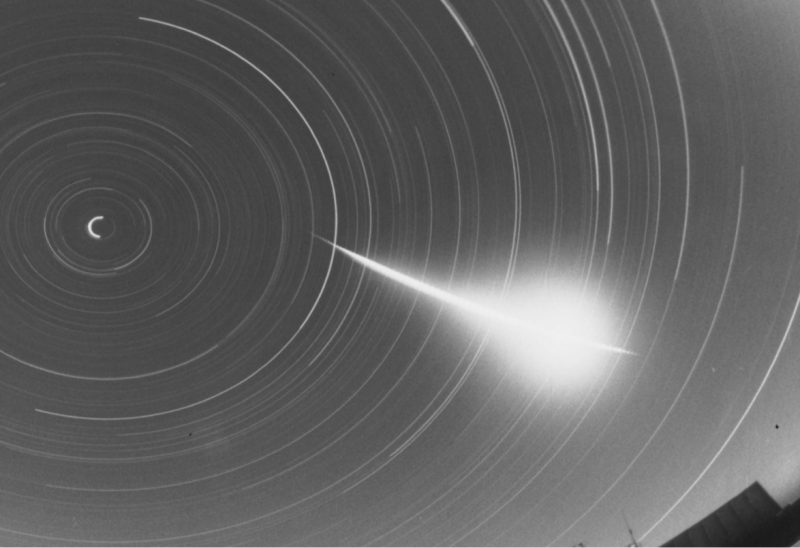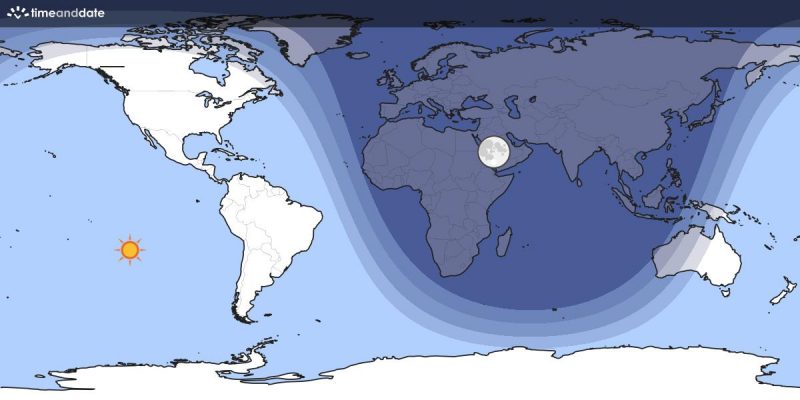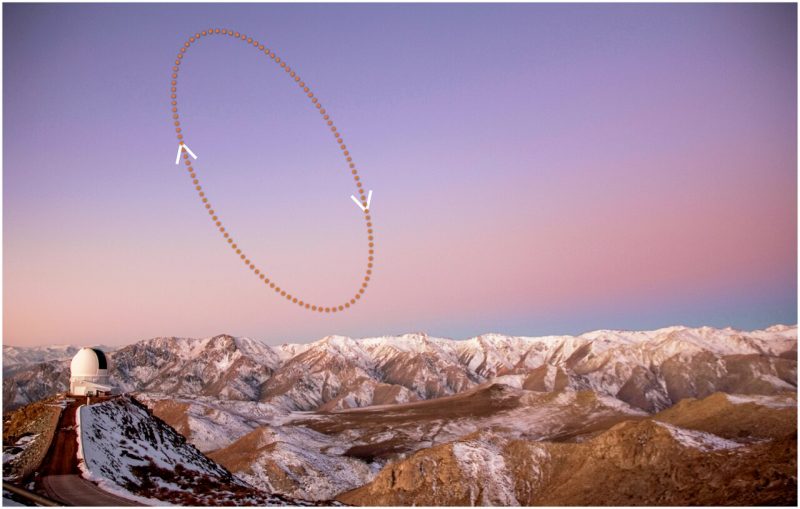
Top 10 stories of 2022
From a year that saw a successful mission for Artemis 1 (first step in our human return to the moon) and a space mission that moved an asteroid – to dried-up lakes that revealed human bodies and more – there’s been a lot to talk about! With an active sun, planetary conjunctions and eclipses, both space and Earth news kept us enthralled this year. Come along with us as we review our top 10 stories of 2022.
#1 – Asteroid discovered hours before Earth impact
The first of two newly discovered asteroids to hit Earth in 2022, EB5 arrived north of Iceland with no security cameras to watch it burn up in the atmosphere. Hungarian astronomer Krisztián Sárneczky at the Piszkésteto Mountain Station – part of Konkoly Observatory near Budapest – discovered the small asteroid on March 11, 2022, just two hours before it struck Earth’s atmosphere at 21:22 UTC. The asteroid is believed to have started out about 10 feet (3 meters) wide. Read more about EB5.
#2 – Asteroid hit Canada, may have dropped meteorites
Astronomers spotted an asteroid just hours before it struck Earth on November 19, 2022, near Lake Erie in Canada. It was not the first time this year astronomers discovered a rock from space just hours before it hit Earth. But this time, it entered Earth’s atmosphere over a populated area, crossing the skies of Toronto, Canada. We have video and witnesses who saw, heard and felt the impact. And astronomers said locals may be able to find meteorites from the impact. Read more about the Canadian impact.
#3 – Geomagnetic storms: Will you lose power where you live?
When the next big geomagnetic storm comes, will you lose power? Researchers studied past storms, including the most intense storm of the space age – the March 1989 geomagnetic storm – to determine future risk. The 1989 storm caused a nine-hour blackout in Quebec, while in parts of the United States it caused disruption to electric power and damaged a high-voltage transformer. The researchers created maps based on strong, historic geomagnetic storms and concluded that, in the United States, some of the more vulnerable areas include the Mid-Atlantic, Northeast, and the upper Midwest. Read more about the geomagnetic storm map.

#4 – Why are the Voyager spacecraft getting closer to Earth?
For a few months each year, the distances between the Voyager spacecraft and Earth actually decrease. You might know that both Voyager spacecraft were launched into space in the 1970s and visited the outer planets through the 1980s. They’ve been heading out of our solar system ever since. In 2012, Voyager 1 entered interstellar space. Then, in 2018, NASA announced that Voyager 2 had entered interstellar space, too. They are both headed outward, never to return to Earth. So, how do they get closer from February to June? The answer relates to Earth’s orbit. Read more.
#5 – July 8 … 99% of the world’s population in sunlight simultaneously?
Konstantin Bikos, lead editor at timeanddate.com, fact-checked the claim that 99% of the world’s population receive sunlight simultaneously on July 8. Timeanddate shared that it is technically true that 99% of the world’s population experiences some sunlight at 11:15 UTC on July 8. But some of those experiencing it will think it’s the night. Read more.
#6 – Did alien technology crash in Pacific in 2014? Harvard astronomer says ‘maybe’
Harvard astronomer Avi Loeb is known for thinking out of the box. For example, in 2018, he suggested that ‘Oumuamua – the object from a distant solar system that’d passed near our sun the year before – might be alien technology. On April 20, 2022, in an article in The Debrief, Loeb suggested that a meteor known to have crashed in the Pacific Ocean in 2014, might also be technology from an alien civilization. Read more about Loeb’s claims.
#7 – ‘Hobbits’ among us? An anthropologist says maybe
Anthropologist Gregory Forth at the University of Alberta in Canada authored a controversial opinion piece in The Scientist on April 18, 2022. In it, he claims that a relic population of elf-like ancient hominins might still roam the jungles of a remote Indonesian island. Read more about the hobbits that may walk the Earth with us.
#8 – A black hole jet aimed at Earth
When astronomers saw an immensely bright flash of light in deep space earlier this year, they naturally wondered what caused it. Now, researchers at the Massachusetts Institute of Technology (MIT) and other institutions from around the world say they’ve solved the mystery. The flash – brighter than 1,000 trillion suns – originated from a jet of material shooting out from a supermassive black hole. They say the black hole was likely devouring a star. The flash of light was so bright because the jet was aimed toward the Earth. Read more about this black hole jet aimed at Earth.
#9 – A moment of global darkness on December 6
Konstantin Bikos and Graham Jones of timeanddate.com explored the idea of when the majority of people on Earth experience nighttime at once. They discovered that the moment of maximum darkness happens at 19:56 UTC on Tuesday, December 6, 2022. At that instant, the sky is completely dark for about 85.92% of the world’s population. At that moment, night reigns across the three most populous continents: Asia, Africa, and Europe (with very minor exceptions). But depending on your definition of night, there are some other options. Read about them here.

#10 – Astronomers confirm a 2nd Trojan asteroid for Earth
Remember the excitement in late January, when the James Webb Space Telescope reached Lagrange point 2, or L2? That’s a gravitationally stable point in the Earth-sun system where a spacecraft (or a natural object) can orbit the sun while maintaining its position relative to the sun and Earth. There are five Lagrange points. Two of these points – L4 and L5 – are on Earth’s orbit around the sun. Asteroids located at the Earth-leading Lagrange point (L4) and the Earth-trailing Lagrange point (L5) are known to astronomers as Trojan asteroids, or Earth Trojans. Astronomers already knew Earth had one Trojan. Now we know it has two, with the second announced on February 1, 2022. Read more about the new Earth Trojan, labeled 2020 XL5.

Bottom line: The top 10 stories of 2022 is a review of what we’ve learned in the past year from our home planet, Earth, out to the vast universe.











